There’s nothing “organic” about millions of lines of code, sprawling server farms, miles of fiber-optic cabling, highly advanced algorithms and quadrillions of bytes of data.
So what’s the word doing in Google’s lexicon?
Organic search traffic simply means unpaid search results. It refers to links in the search engine results pages (SERPs) that are based entirely on their relevance to the user’s search query. They haven’t been tampered with. And in this sense, they have been “organically” arrived at.
This is organic search traffic:
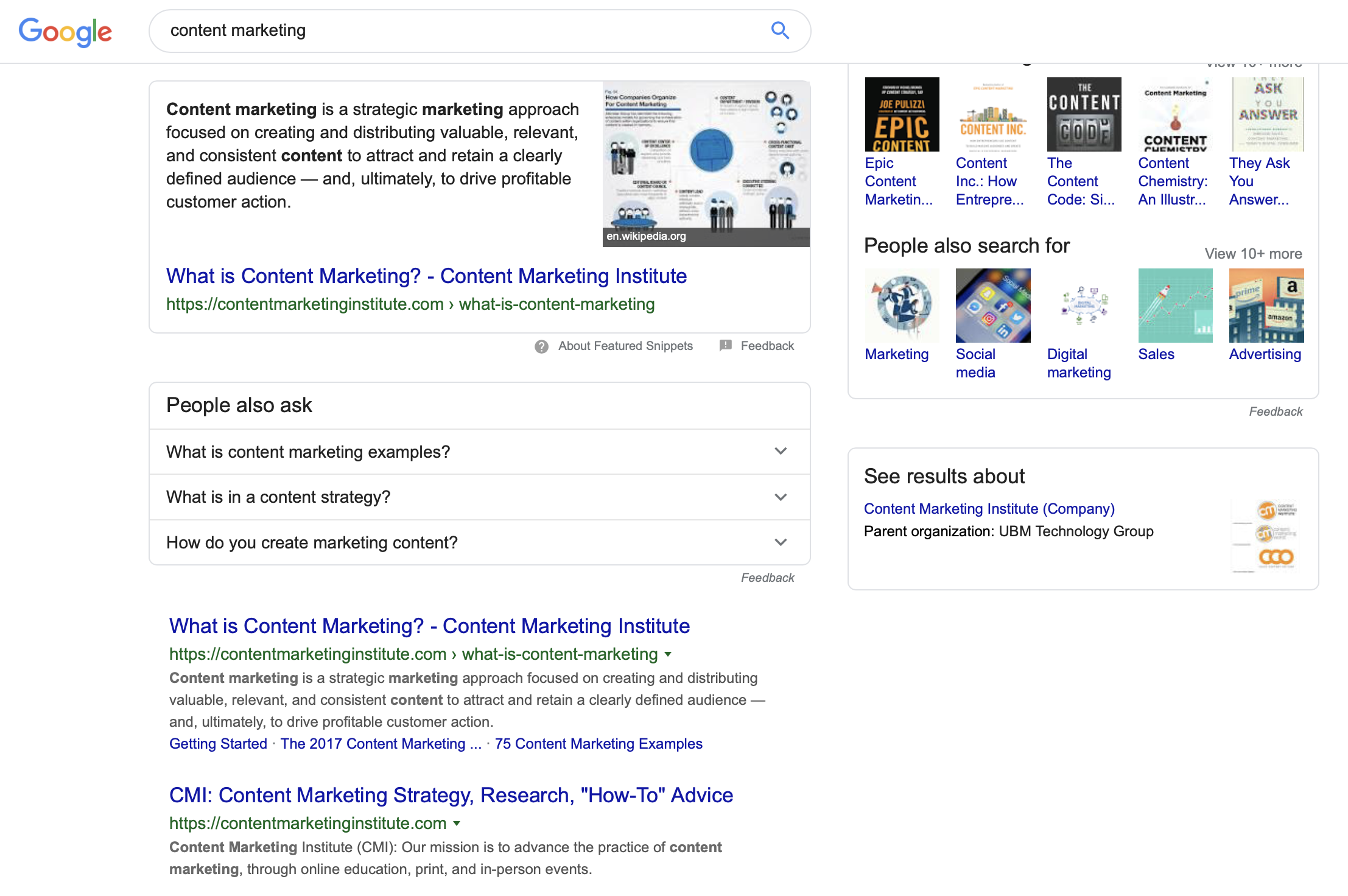
Paid search results are generated because an advertiser paid Google to display them at the top of the SERPs, not because Google’s organic algorithms think they deserve to be there.
This is paid traffic:
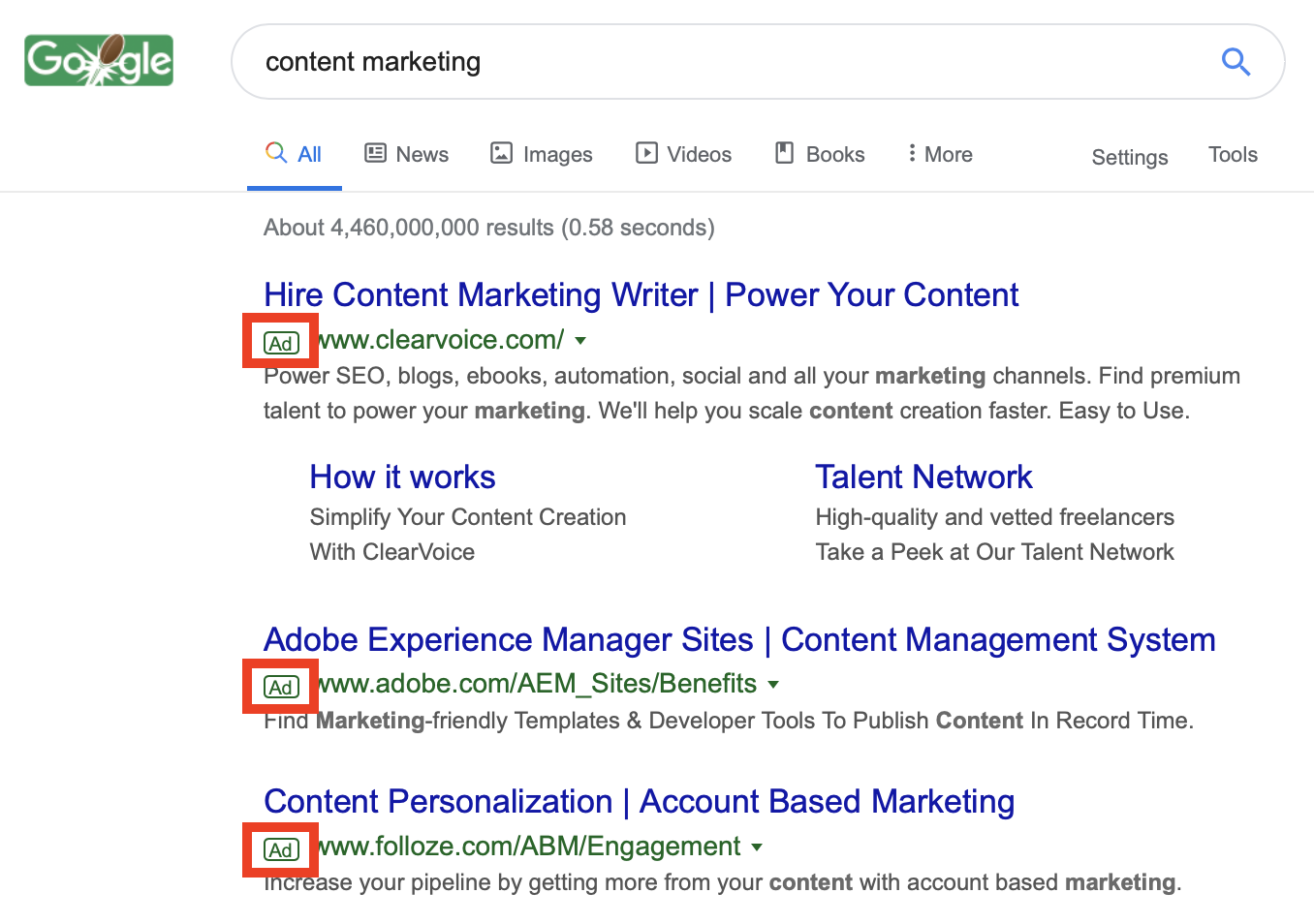
What is organic SEO?
Organic search engine optimization (SEO) is the practice of optimizing your website’s code and its copy so that your pages rank higher in organic search results. Think of organic SEO as a scientific approach to persuading search engine crawlers that your content is most relevant to what users are searching for.
Organic SEO is your way of showing Google that your site is the best source of information for queries related to certain subjects, and that it deserves to rank on the first page for those keywords.
Why is organic SEO so important?
Because the odds of your site being discovered through a search engine are drastically reduced if you do nothing to:
- Make your pages more visible to Google’s search crawlers.
- Make sure Google has ample context through written copy and metadata to understand what your pages are about.
- Provide evidence through high-quality content that your pages satisfy the intent of certain searches more proficiently than your competitors’ pages.
There are more than 40,000 Google search queries every second. Millions of results may display for each one, but the first 10 will get the overwhelming majority of clicks.
Go beyond Page 1, and the likelihood of a click tanks. By some estimates, CTR on Page 2 is a measly 5%. Other studies paint a more grim picture, citing CTRs as low as 0.78% on the second page.
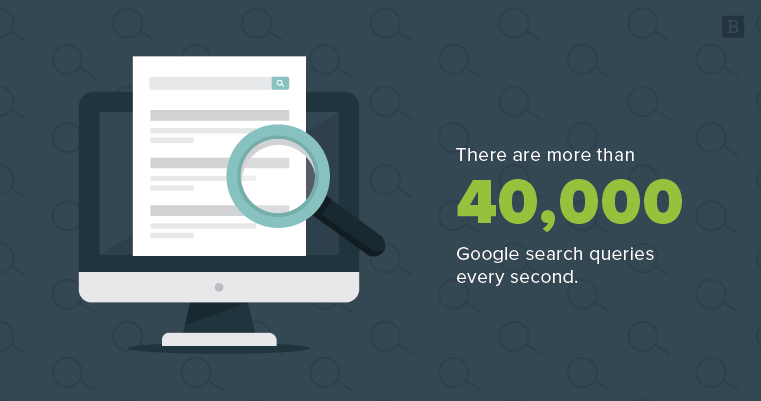
Remember, Google’s goal on organic search is to provide its users with the highest-quality content and answer their questions as effectively as possible. That’s why the search engine is increasingly using in-SERP features, like featured snippets and “People also ask” on Page 1.
Organic SEO is your way of showing Google that your site is the best source of information for queries related to certain subjects, and that it deserves to rank on the first page for those keywords.
What goes into an afternoon of organic SEO?

First, there’s the stuff you can feasibly do in an afternoon:
1. Benchmark your site’s overall performance with Google Analytics metrics:
- Sessions: Begins when a user reaches any webpage on your site; ends when they leave your domain entirely.
- Pages per session: Number of pages visited during each session.
- Session duration: Length of a session.
- Page views: Number of times any user visits any page on your site.
- Bounce rate: Percentage of sessions that end after a visitor sees only one page.
- Acquisitions: This overview shows you the sources of traffic to your site (organic, direct, email, other, etc.).
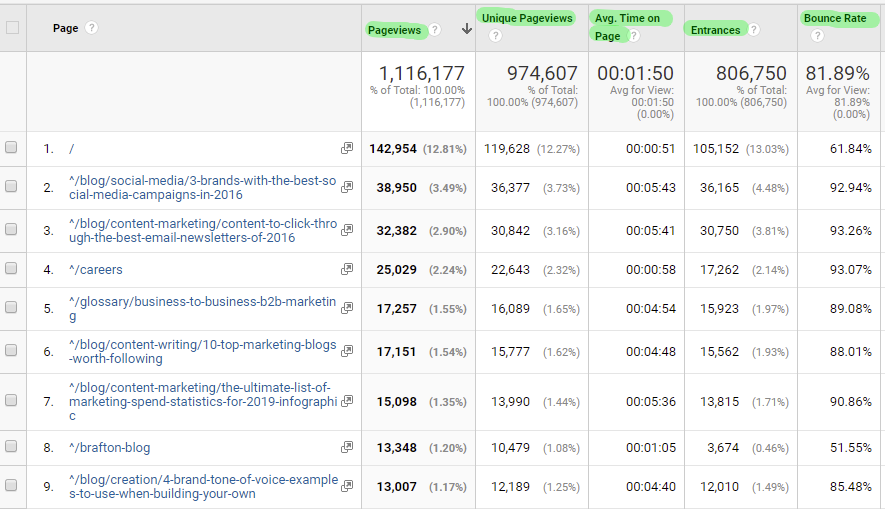
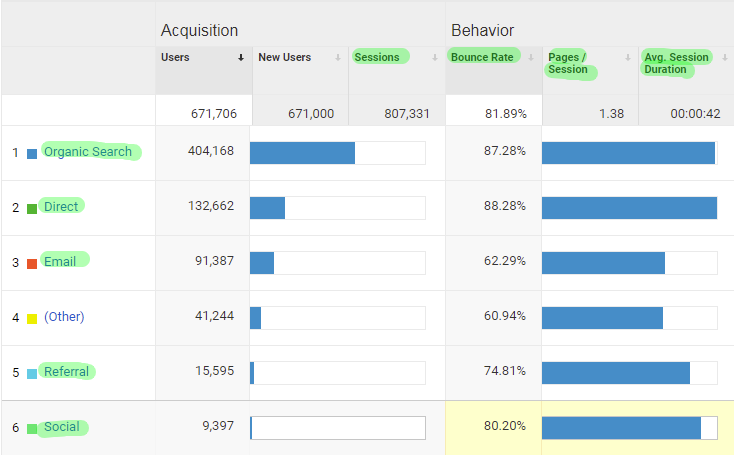
2. Benchmark your site’s performance on organic search with Search Console metrics:
- Impressions: Number of times any page on your domain appears in organic SERPs.
- Queries: Search queries that generated an impression.
- Clicks: Number of times a user clicks on one of your URLs in search.
- Click-through rate (CTR): A ratio of clicks to impressions.
- Average position: An average of where your site ranks for queries.

3. Start developing a strategy informed by your analysis; prescribe SEO tactics based on where you find you’re falling short.
Examples of issues you may encounter and what they may be symptomatic of include:
- Poor engagement: Short sessions and high bounce rates might indicate non-intuitive navigation, that you’re not doing enough to keep users on the page or that you’re targeting the wrong readers.
- Not ranking for many queries: May imply that you’re trying to rank for keywords that are too difficult, and that you’re not doing enough to target lower difficulty long-tail keywords.
- Low average ranking: Could be an indicator of many things, including a technically flawed site, on-page content that isn’t optimized for the keywords your target audience is using and much, much more.
Then there’s all the stuff you probably can’t do in an afternoon:
4. Get your strategy exactly right
- It may take some trial and error before you figure out exactly what’s hurting your performance on organic search.
5. On-page SEO
- Optimize the technical elements of your site such as page speed, mobile friendliness, XML sitemap and eliminate site errors and duplicate content.
- Create on-page content:
- Identify your target readers.
- Create a list of keywords that reflects what those readers are searching for.
- Be sure to target long-tail keywords – these have lower commercial intent but are usually much easier to rank for.
- Analyze the top-ranking pages for your chosen keywords.
- Create content that covers the core topics and uses semantic keywords that appear in those top pages.
6. Off-page SEO
- Try to earn backlinks back to your webpages in order to signal your site’s credibility to Google.
- Use social media to promote your content, improve brand mentions and increase backlinks.
7. Local SEO
- Take steps to rank better for a local audience.
- More on local SEO here.
- Create on-page content:
First you need benchmarks
You need to know where you are before you figure out how to get where you want to go.
Use Google Analytics to identify some general website performance metrics such as:
- Sessions and unique sessions: A session is a set of interactions with your site. It begins when a user reaches any webpage on your site; it ends when they leave your domain entirely. Unique sessions refers to the number of users who have had a session.
- Pages per session: Average number of pages users visit in a session. More pages per session could be a good thing (readers are into your pages) or a bad thing (poor UX), and the only way to know for sure is with the help of other metrics.
- Session duration: The length of a session. Higher can be better since it might indicate engagement. However, if you have a bunch of pages per session but low time on page or a miniscule session duration, it could be a sign that users are scouring your site for information that they’re ultimately not finding.
- Page views: The number of times any user user visits any page on your site. You can also drill down to see which pages are collecting the most page views.
- Bounce rate: Percentage of sessions that end after a visitor sees only one page. Blogs tend to have high bounce rate since users might come for very specific information and then leave once they have it. For blog posts at least, it helps to weigh this metric against others, like time on page and conversions.
- Acquisitions: This overview shows you the sources of traffic to your site (organic, direct, email, other, etc.).
All of these metrics are important for general site performance, but also for organic SEO.
Acquisitions, for instance, can tell you exactly how many visitors are coming in through search.
Pages per session, session duration and bounce rate can clue you into whether or not you’re attracting the right visitors with the content that’s on your site.
You’ll also need to use Search Console to get a more concrete sense of your site’s performance on organic search results. Some important metrics to look at include:
- Impressions: Number of times your page URLs display in organic SERPs.
- Queries: All the search queries that generated an impression for your URLs.
- Clicks: Number of times a user clicks on one of your URLs in search.
- Click-through rate (CTR): A ratio of clicks to impressions.
- Average position: An average of where your site ranks for queries.
You can use keyword research tools to get a more detailed sense of exactly what keywords your site is currently ranking for, and also what keywords your competitors’ sites are ranking for.
For this purpose, we recommend one or more of the following tools:
- SEMrush.
- Moz Keyword Explorer.
- Ahrefs.
- KWFinder.
Here’s an example of domain overview that shows the number of keywords Brafton.com has ranked for at different points in the past six months:

As we’ll get into later, a tool like SEMrush can also help you find keywords that are worth targeting based on factors like monthly search volume and difficulty.
Next, you need a strategy
This is the part where you look at your data, figure out what it might be telling you and then prescribe SEO tactics to get better results.
Organic SEO takes patience and a bit of trial and error.
For instance (and as we stated in our checklist):
- Short sessions and high bounce rates could signal non-intuitive navigation, that you’re failing to keep users on the site or that you’re altogether targeting the wrong readers.
- Ranking for very few queries could indicate that you’re trying to rank for keywords that are too difficult.
- Low average ranking could be anything from a technically flawed site to on-page content that isn’t optimized your target audience’s search queries and much, much more.
The above examples are a bit oversimplified for the purposes of this blog post. Organic SEO takes patience and a bit of trial and error. So like we said, don’t realistically expect to nail this part in an afternoon.
With that in mind, most strategies will include some combination of the big-three types of organic SEO:
1. On-page SEO
On-page SEO refers to any unpaid SEO tactics that happen on your website – meaning, it’s anything you do to your website that might improve its visibility to search engines and help you rank higher.
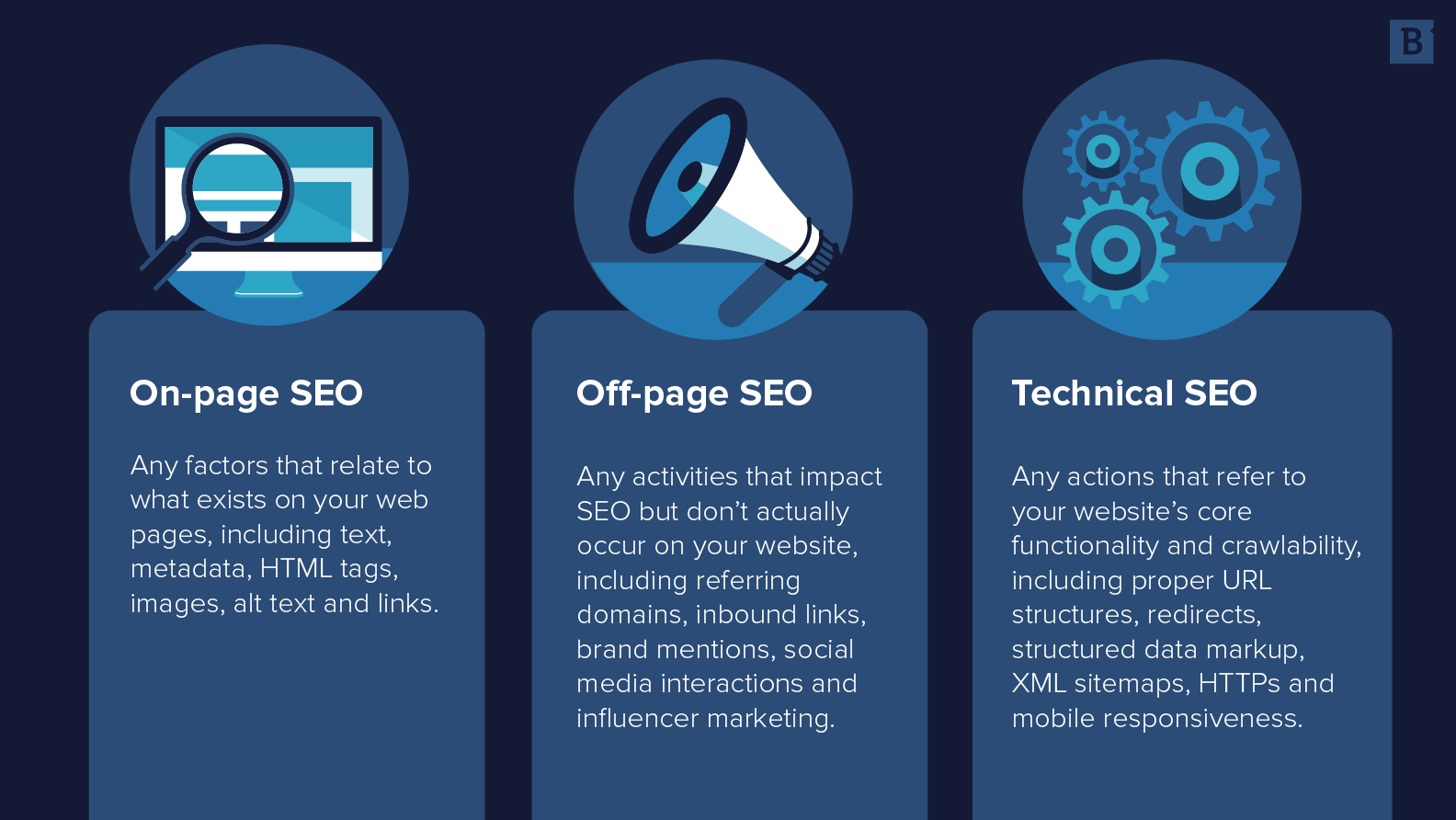
The following fall under the umbrella of on-site SEO:
Technical SEO
Technical SEO is all about the optimization of on-site technical elements that can influence your ranking in organic search. These include:
- Mobile friendliness.
- Page speed.
- SSL encryption (HTTPS vs. HTTP).
- Meta tags and meta descriptions.
- ALT tags for images.
- XML sitemap structure.
- User experience.
A technically sound website is a foundation for your organic SEO efforts. It’s easy for Google crawlers to interpret and index. It doesn’t have broken links and 404 errors, or duplicate content. It isn’t trying to index useless pages like “your order is processing” that have no relevance to search engines.
A technically sound website is a foundation for your organic SEO efforts.
Don’t ignore technical SEO. Too many site publishers never even get off the starting block because their SEO tactics are built on a fundamentally flawed website.
Use a tool such as ScreamingFrog to perform site audits and identify technical issues that bedraggle your site’s performance on organic search.
On-site content creation
Think of this is as all the user-facing content on your website. This includes:
- Landing page copy.
- Videos.
- Blog posts.
- Contact fields.
- Links.
- PDFs (white papers, infographics, eBooks).
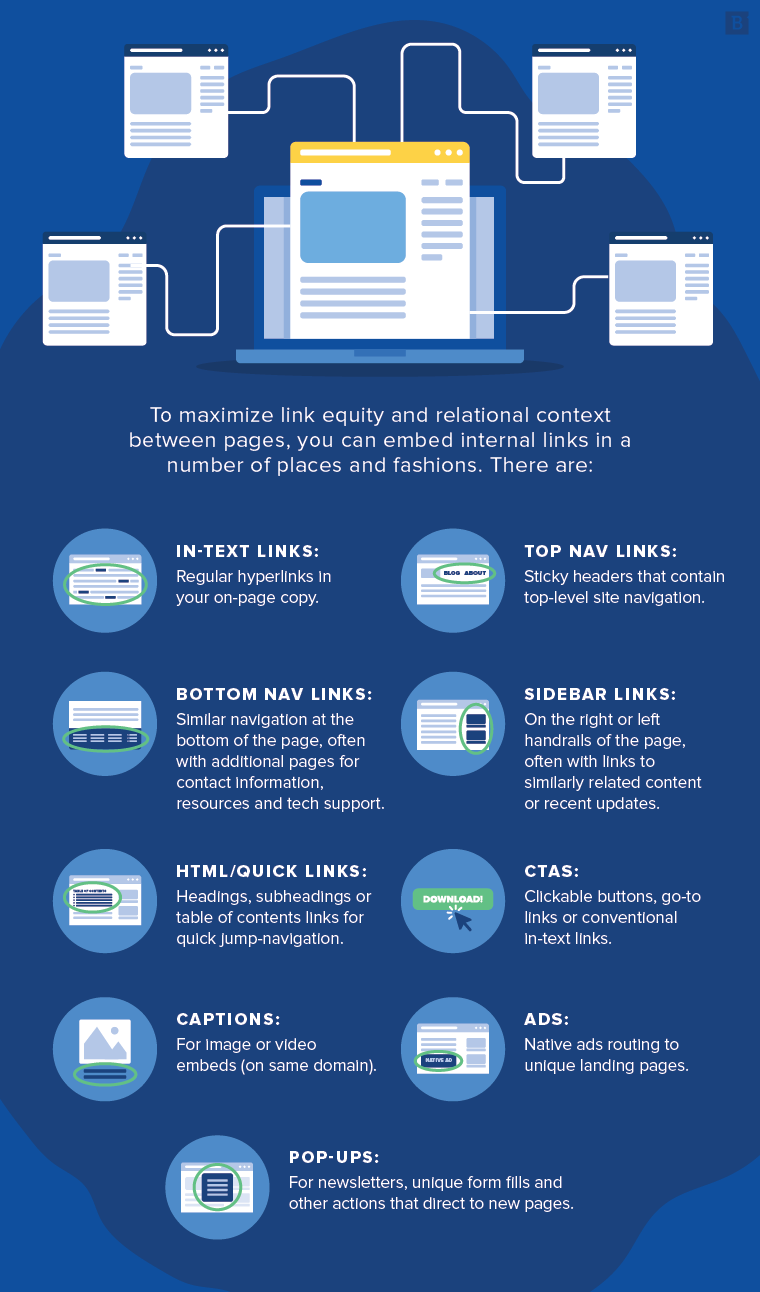
A lot goes into optimizing your on-page content for search engines. But the high-level breakdown that will help you get started looks like this:
- Know your audience: Yes, you optimize for Google, but you write for people. And you want to make sure that you’re creating content that ranks well and actually gets in front of the right eyes.
- Conduct keyword research: Use a tool like SEMrush or KWFinder to create lists of keywords that are relevant to your brand. You ideally want terms with low keyword difficulty that people are actually searching for each month. This might mean targeting long-tail keywords (more on these later).
- Perform analysis of the top-ranking content: The goal here is to figure out what topics the top-ranking pages for each keyword have covered, and what semantic (or secondary) keywords they use. It’s really, really time-consuming to do this manually. We recommend using MarketMuse, SEMrush or both to help you analyze what points you need to hit in your landing pages and blog posts in order to rank.
- Create and post your content: Arguably, the content analysis steps leading up to this can be done in an afternoon, but creating your content might take a little longer.
- Repeat: SEO is anything but a one-and-done exercise. It’s a practice.
2. Off-page SEO
Off-page SEO refers to any unpaid SEO tactics that take place off your website. The most prominent examples of off-page SEO include:
Backlinking strategies
Here’s the idea: Google pays attention when it sees other websites with strong domain authority link back to your webpages (domain authority, or DA, is a metric that predicts how well a site will rank on SERPs).
Backlinking is a crucial ranking signal. It’s also a finicky one.
There are few avenues toward earning those backlinks. These include:
- Publishing guest articles on other blogs and online magazines that link back to your website.
- Working with site publishers that have solid DA – you publish theirs, they publish yours. This only works if you have decent DA yourself. If your on-page SEO game is strong, you can leverage your site authority to barter for backlinks.
- Getting written about in industry magazines. You can do this by doing newsworthy stuff, attending conferences, etc.
The important thing to remember is that backlinking is a crucial ranking signal. It’s also a finicky one. Google cares about the quality of backlinks, and it has various algorithms that sniff out spammers and distinguish between links in comment boards and those that are actually appearing on the page with relevant anchor text.
So, no, linking to your pages in the comments section of this post will not help you.
And neither will publishing a bunch of phony press releases and then linking them back to your site. Google got wise to that game eons ago.
There is no easy road to earning quality backlinks. This one definitely takes more than an afternoon, but it can have a profoundly positive influence on your ranking.
Social media
People discover content in other ways than just search, and that includes social media
In the interest of moving things along (we did say an afternoon), we’ll be brief.
Social media does not directly affect organic search ranking. And it does not provide much in the way of backlinking benefits.
However, it can have a positive influence on search rankings. Content that gets a lot of attention on social media is seen by more people, which means it’s more likely to be linked to by other websites.
And that gets Google’s attention, which is good for your site ranking.
3. Local SEO
Local SEO is all about improving your site’s ranking for local searches. Many of the same tenets of off-page and on-page SEO apply, with some key differences.
In local SEO, optimizing your Google My Business (GMB) account is priority No. 1. Other important elements include:
- Ensuring that all local information about your business (name, address, phone number and website) is consistent and accurate across the web.
- Answering questions pertaining to your business.
- Creating individual landing pages for each of your locations.
- Responding to customer reviews on your most important business directories.
We won’t go into too much detail on this post since we’ve already done that elsewhere on this blog. But if local SEO is exceptionally important to your brand – say, because you have many locations that are hyper-focused on local markets – then we highly recommend checking out this blog post and this one as well.
Now let’s talk about the extraordinary power of long-tail keywords
Sometimes a customer journey starts with someone who has clear intent to buy and is looking for products by typing them into a search engine. In these cases, paid SEO might reap dividends (more on this later in this post).
But often, the journey begins with a web user trying to obtain information or solve a problem.
They’re searching for answers, not necessarily for products or for brands. In those cases, they might use what we call long-tail keywords as they query Google.
Let’s take a keyword, say, “content marketing.”
An example of a long-tail version of that keyword is “how content marketing helps SEO.” There’s no apparent intent to buy anything in this keyword. Someone is just asking a question of Google.
And if you look at the pay-per-click data on SEMrush, there isn’t much to see:
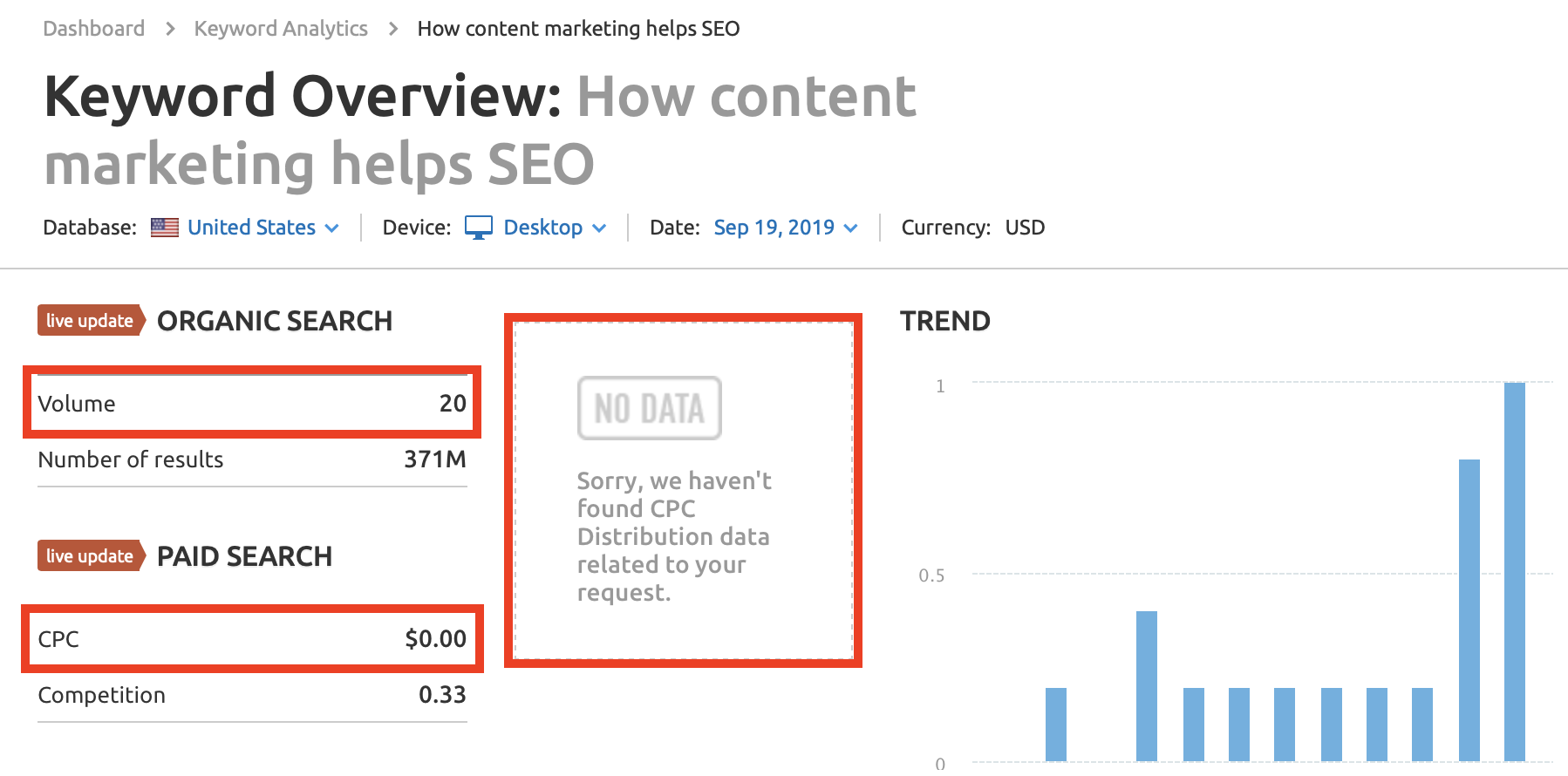
Does that mean this keyword is useless? Not at all!
In fact, long-tail keywords are kind of everything on organic SEO. The really high-volume, high-intent keywords like “content marketing” are exceptionally competitive – many publishers are forever vying for that top spot, few succeed and most waste a lot of money while failing.
The great thing about your website and blog is that you can use them as a chance to create content that ranks well for long-tail keywords.
And no, this can’t be done in an afternoon. It takes time and effort. But we really can’t stress enough how powerful this strategy is, so we’ll just show you.
As of October 2017, we were ranking for 8,858 keywords. We wanted to bring that number up, so we started targeting more long-tail keywords like “content marketing best practices” and “examples of visual content.”
Here’s what happened:

In the span of less than two years, we more than doubled the number of keywords we rank for, from under 9,000 to more than 20,000. That’s kind of astonishing in its own right.
But the real prize for our efforts was an incredible spike in organic traffic:

In late 2017, we averaged around 4,000 monthly visitors. By the middle of 2019, we were pushing 20k.
But there’s something else about the chart above that sticks out. Up until 2016 it’s full of little peaks and valleys, but no consistency. Starting in late 2017, we didn’t just achieve a spike. We kicked off a pattern of sustained growth.
So is Organic SEO better than Paid SEO?
At first glance, yes. Pay-per-click (PPC) search campaigns have low CTR – a little under 2% by some estimates, which is why it’s more useful as an adjunct to higher-performing organic campaigns than as a primary tactic for SEO. Most of our traffic at Brafton comes from organic search, then direct traffic (thanks to our email marketing efforts) and then referrals:
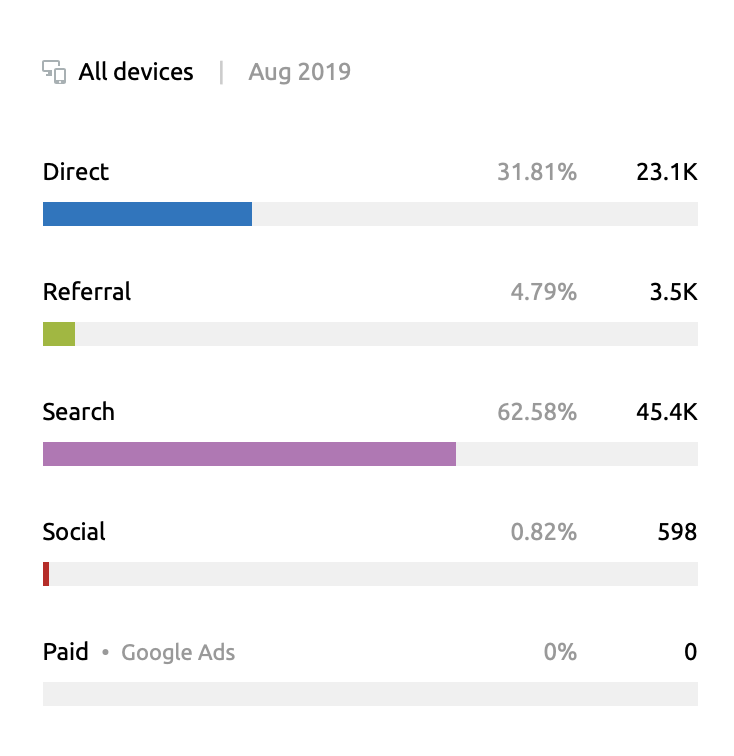
That said, organic SEO and PPC serve very different functions.
Organic SEO builds trust with valuable information that appears in SERPs in response to queries. It gets your brand in front of your target audience and makes a solid first impression. It tells Google that you’re useful. In this sense, it has a much longer term impact on your ranking.
Paid SEO can help drive up conversion rates for keywords that have stronger commercial intent. It can encourage someone in the deeper stages of a sales funnel to sign up for a demo.
But for users to even get to that point, they have to trust your brand, and that requires a demonstration of your brand’s expertise and value. You can provide that demonstration by dominating organic search results for your target audience’s queries and by answering those questions sufficiently.
TL;DR: Paid SEO can be a nice add-on to an organic SEO campaign. But that’s really about it.
Next steps?
Now that you’ve made it through this behemoth of a blog post, you’re free to embark on your organic SEO journey.
Along the way, you’ll almost certainly run into questions. Rest assured, whatever we haven’t answered on our blog or on our resource center, we’d be happy to answer for you via email or over the phone.
Or, you could just leave a question in the comments section below, and we’ll get back to with an answer ASAP.
And with that, we wish you a nice afternoon, and many successes on your future SEO endeavors.





